This is one set I've had my eye on for quite sometime.....probably 3-4 years or so. The same auction would always come up and it never seemed to sell, but I finally pulled the trigger and was lucky enough to end up with 5 sheets of this new set. I've labeled and catalogued this new set in my book as the 1958 All Star Matching Game (G582). I'm still working on the company that produced these and have cross checked the set in Engel's book, but he doesn't have it listed there. This set is easy to nail down as being from 1958 as it shows Asashio ranked as an Ozeki, but he promoted to Yokozuna in late 1958. It also has 4 rookie cards of the baseball player Nagashima as he started playing in 1958. So we have 4 previously unknown and uncatalogued rookie cards of Shigeo Nagashima which is a pretty amazing find as well for the Japanese Baseball Card collectors.
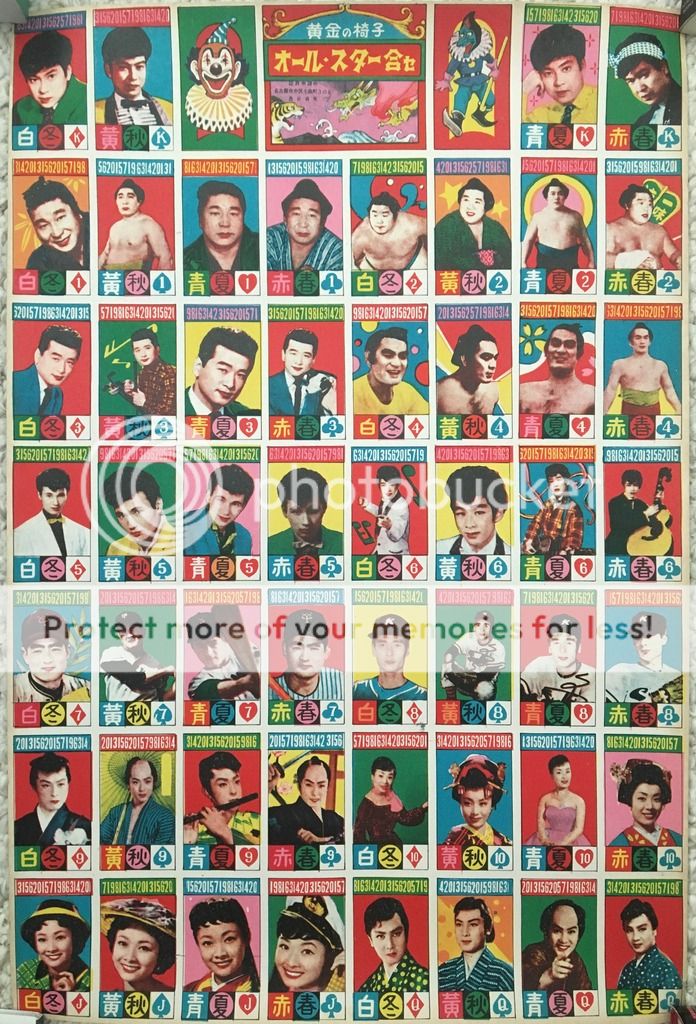
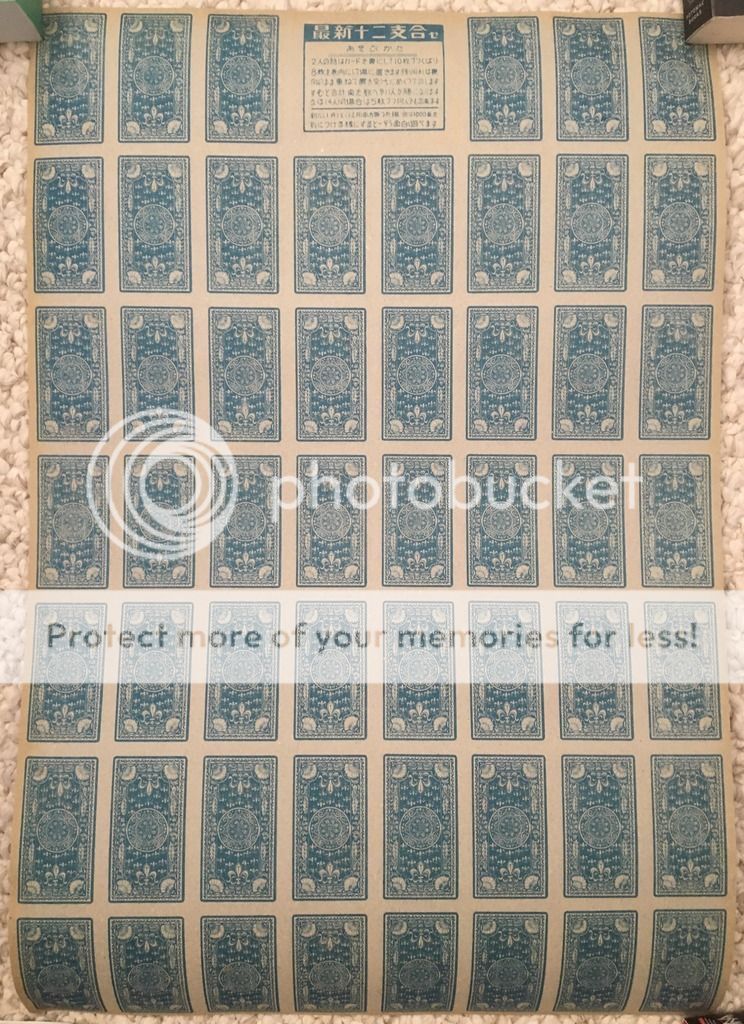
The back explains several ways to play, but the common way is to play it like memory game. Put all the cards face down and try to match pairs (合せ in Japanese). There are a variety of ways to do this with this set: number, person, playing card suit, playing card number, season kanji, color kanji.... These cards could also be used as a regular playing card deck.
There are 54 cards in the set...52 regular cards and 2 jokers. Each card has pictures of a famous person from 1958 and each person has four different cards (Same playing card number, but 4 different suits). Quick public math verified by photos results in 13 different people depicted in the set with 4 cards each. Sadly, I'm not versed in 1958 Japanese actors or music stars so I don't know who the majority of the people are(yet), but I do know the 3 sumo wrestlers and 2 baseball players (thanks NPB Card Guy for the help on Masaichi Kaneda). It's not surprising that the established Yokozuna weren't included in this set as they were nearing the end of the prime and the new youngsters and popular wrestlers in Wakanohana, Asashio, and Kotogahama were in much better favor.
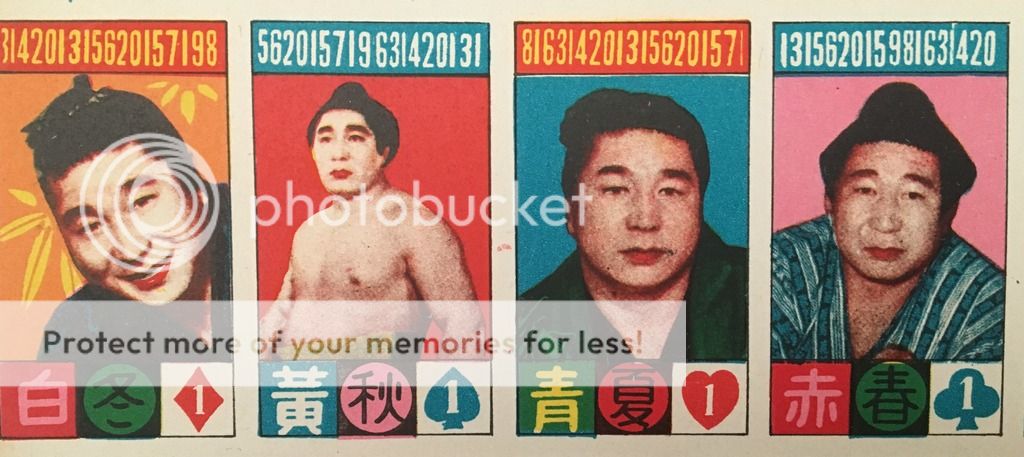
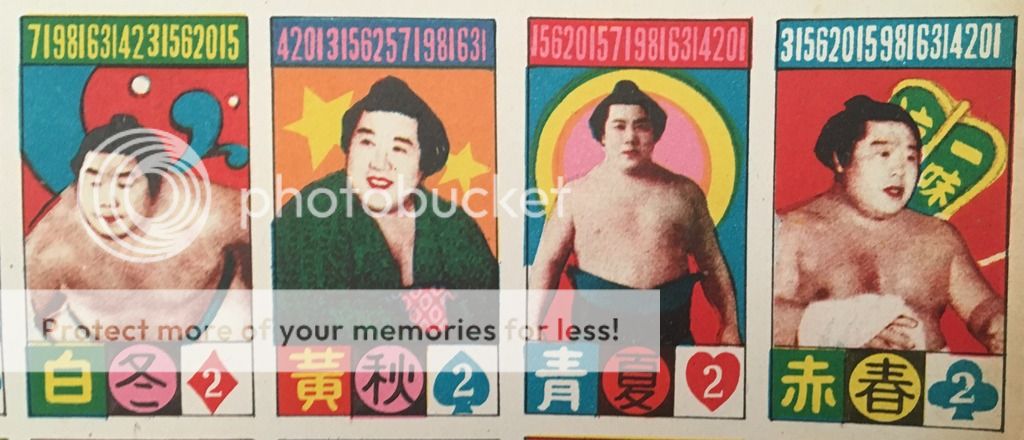
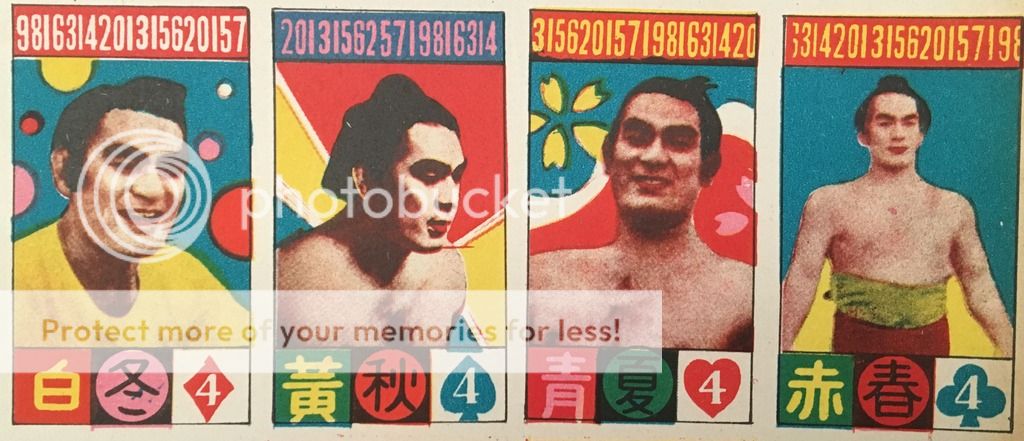
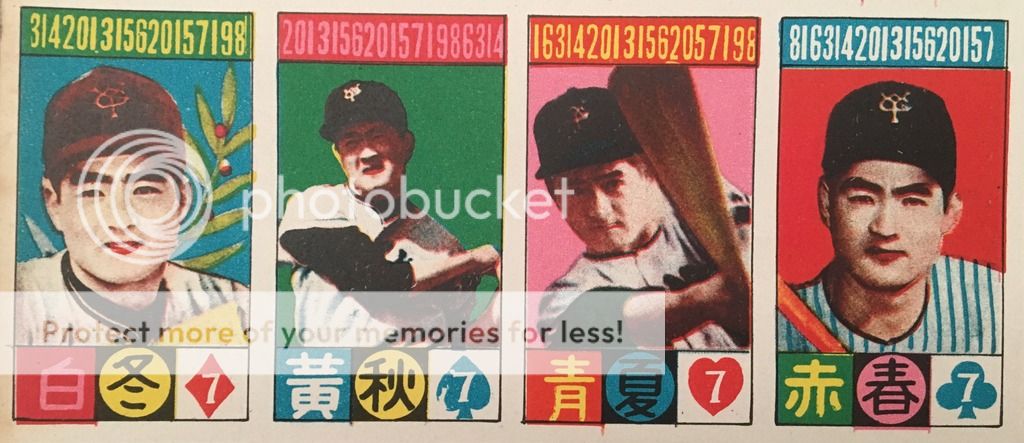
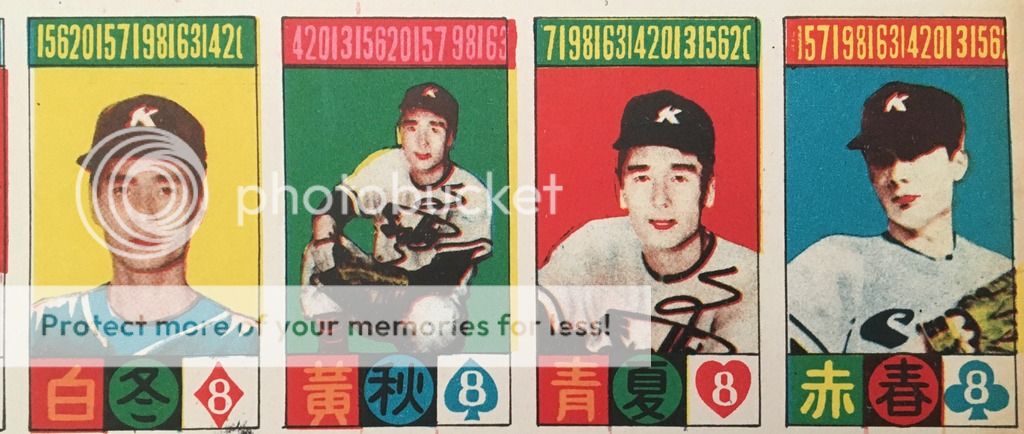
The sheet is printed on thin cardboard stock, about like construction paper, and measures about 12.25" X 18.25". Each card measures about 1.5" x 2 5/8". There is a lot going on with each card and a lot of distinguishing features. For the purpose of the checklist, I chose to identify each card by playing card number & suit followed by background color.
Here is the current checklist:
KD - Unknown Actor - Red Background
KS - Unknown Actor - Blue Background
KH - Unknown Actor - Pink Background
KC - Unknown Actor - Green Background
QD - Unknown Actor - Red Background
QS - Unknown Actor - Orange Background
QH - Unknown Actor - Green Background
QC - Unknown Actor - Red Background
JD - Unknown Actress - Blue Background
JS - Unknown Actress - Red Background
JH - Unknown Actress - Pink Background
JC - Unknown Actress - Green Background
10D - Unknown Actress - Green Background
10S - Unknown Actress - Blue Background
10H - Unknown Actress - Red Background
10C - Unknown Actress - Pink Background
9D - Unknown Actor - Red Background
9S - Unknown Actor - Yellow Background
9H - Unknown Actor - Red Background
9C - Unknown Actor - Yellow Background
8D - Masaichi Kaneda - Yellow Background
8S - Masaichi Kaneda - Green Background
8H - Masaichi Kaneda - Red Background
8C - Masaichi Kaneda -Blue Background
7D - Shigeo Nagashima - Blue Background
7S - Shigeo Nagashima - Green Background
7H - Shigeo Nagashima - Pink Background
7C - Shigeo Nagashima - Red Background
6D - Unknown Singer - Red Background
6S - Unknown Singer -Yellow Background
6H - Unknown Singer - Blue Background
6C - Unknown Singer - Red Background
5D - Unknown Actor - Red Background
5S - Unknown Actor - Green Background
5H - Unknown Actor - Pink Background
5C - Unknown Actor - Yellow Background
4D - Ozeki Asashio - Colored Circle Background
4S - Ozeki Asashio - Red/Yellow/Blue Background
4H - Ozeki Asashio - Colored Flower Background
4C - Ozeki Asashio - Blue Background
3D - Unknown Actor - Red Background
3S - Unknown Actor - Green Background
3H - Unknown Actor - Yellow Background
3C - Unknown Actor - Red Background
2D - Ozeki Kotogahama - Wave Background
2S - Ozeki Kotogahama - Star Background
2H - Ozeki Kotogahama - Circle Background
2C - Ozeki Kotogahama - Fan Background
1D - Yokozuna Wakanohana - Orange Background
1S - Yokozuna Wakanohana - Red Background
1H - Yokozuna Wakanohana - Blue Background
1C - Yokozuna Wakanohana - Pink Background
I have 5 sheets of these so one or two will likely make their way to eBay.






































